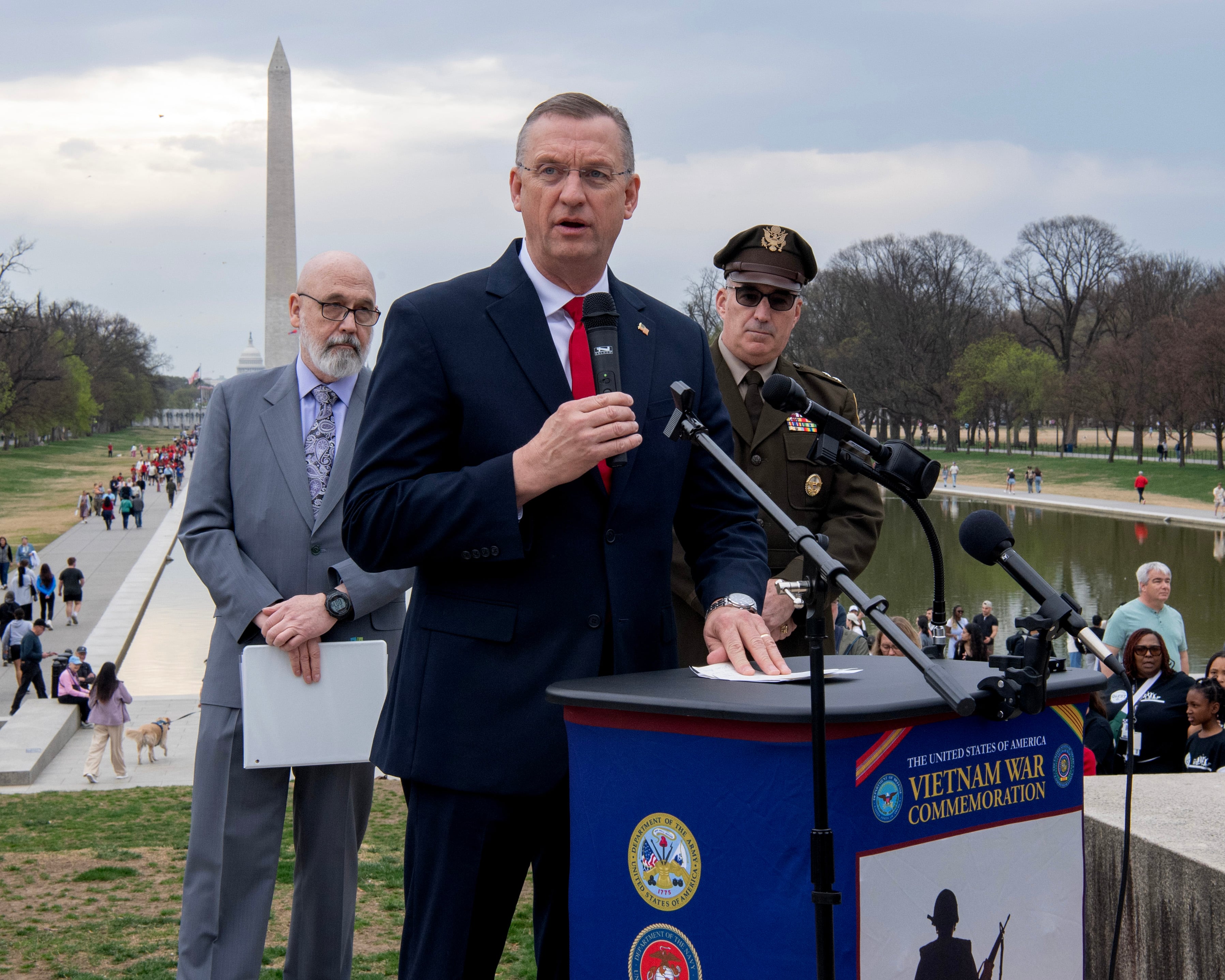Aircraft from 21 Air Force and Marine Corps squadrons, as well as aircraft from the United Kingdom and Australia, will take part in three weeks of combat training exercises beginning Monday at Nellis Air Force Base in Nevada.
Under Red Flag 15-1, more than 125 aircraft will depart Nellis twice a day. Some aircraft will stay in the air for up to five hours as pilots practice combat maneuvers.
The Red Flag is a combat training exercise that involves the air, space and cyber forces of the United States and its allies, according to a Thursday release from the 99th Air Base Wing at Nellis. The exercise is run by the 414th Combat Training Squadron, assigned to the 57th Wing at Nellis, and takes place on the Nevada Test and Training Range north of Las Vegas.
The training range, which is run by the Air Force Warfare Center at Nellis, has more than 15,000 square miles of airspace and 2.9 million acres of land.
"With 1,900 possible targets, realistic threat systems and an opposing enemy force that cannot be replicated anywhere in the world, Nellis AFB and the NTTR [training range] are the home of a simulated battlefield, providing combat air forces with the ability to train to fight together in a peacetime environment [and] to survive and win together," the release 99th said in a release.
This year is the 40th anniversary of the first Red Flag exercise. Since 1975, the exercises have trained more than 440,000 military personnel, including more than 145,000 air crew members flying more than 385,000 sorties, logging more than 660,000 hours of flying time, Nellis said.
Red Flag 15-1 The exercises will include U.S. forces and aircraft from:
- 1st Fighter Wing, 94th Fighter Squadron, F-22As, Langley Air Force Base, Virginia
- 20th Fighter Wing, 79th Fighter Squadron, F-16CJs, Shaw Air Force Base, South Carolina
- 55th Electronic Group, 43rd Electronic Combat Squadron, EC-130s, Davis-Monthan Air Force Base, Arizona
- 57th Wing, 526th Intelligence Squadron, DCGS, Nellis Air Force Base, Nevada
- 158th Fighter Wing, 134th Fighter Squadron, F-16Cs, Burlington, Virginia Air National Guard
- 114th Fighter Wing, 175th Fighter Squadron, F-16Cs, Sioux Falls, South Dakota Air National Guard
- 31st Fighter Wing, 555th Fighter Squadron, F-16CMs, Aviano Air Base, Italy
- Carrier Air Wing 17, Electronic Attack Squadron 132, EA-18G, Naval Air Station Whidbey Island, Washington
- 9th Reconnaissance Wing, 99th Reconnaissance Squadron, U-2, Beale Air Force Base, California
- 55th Wing, 43rd Electronic Combat Squadron, EC-130H, Davis Monthan Air Force Base, Arizona
- 509th Bomb Wing, 393rd Bomb Squadron, B-2As, Whiteman Air Force Base, Missouri
- 3rd Marine Aircraft Wing, Marine Fighter Attack Squadron 225, F/A-18D, Marine Corps Air Station, Miramar, California
- 461st Air Control Wing, 12th Airborne Command and Control Squadron, E-8s, Robins Air Force Base, Georgia
- 55th Wing, 348th Reconnaissance Squadron, RC-135s, Offutt Air Force Base, Nebraska
- Patrol and Reconnaissance Wing, Fleet Air Reconnaissance Squadron 1, EP-3C, NAS Whidbey Island, Washington
- Patrol and Reconnaissance Wing Ten, Patrol Squadron 46, P-3C, NAS Whidbey Island Washington
- 22nd Air Refueling Wing, TTF, KC135s, McConnell Air Force Base, Kansas
- 23rd Wing, 79th Rescue Squadron, HC-130Js, Davis-Monthan Air Force Base, Arizona
- 23rd Wing, 66th Rescue Squadron, HH-60Gs, Nellis Air Force Base, Nevada
- 552nd Air Control Wing, 965th Airborne Air Control Squadron, E-3s, Tinker Air Force Base, Oklahoma
- 57th Wing, 64th Aggressor Squadron, F-16Cs and F15Cs, Nellis Air Force Base, Nevada
The exercises will also include Typhoons, F-15Cs, E-3Ds, Sentinels and a Control and Reporting Center from the United Kingdom's Royal Air Force. C-130Js from the Royal Australian Air Force will also take part.
This year is the 40th anniversary of the first Red Flag exercise. Since 1975, the exercises have trained more than 440,000 military personnel, including more than 145,000 air crew members flying more than 385,000 sorties, logging more than 660,000 hours of flying time, Nellis said.
In its release, Nellis advised residents of Southern Nevada that they may notice increased military aircraft activity during the next three weeks.
Stephen Losey is the air warfare reporter for Defense News. He previously covered leadership and personnel issues at Air Force Times, and the Pentagon, special operations and air warfare at Military.com. He has traveled to the Middle East to cover U.S. Air Force operations.




